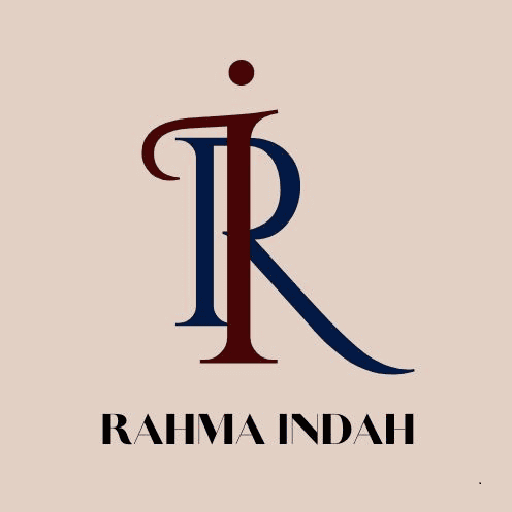Shining Like Diamonds with AuroraLuxe

Many people who like to collect luxury items, or those who like to give their loved ones something rare and have premium value, are the most suitable ones for AuroraLuxe. As a conceptual project, I tried to create designs with a premium vibe.
This project specialized in UX design and used a design thinking approach. I didn’t use any SEO approach, as a luxury brand usually has strong branding and is more focused on paid promotion rather than an organic one. From the empathizing phase until the usability testing phase, this project demonstrated how I emphasized the UX design process for a luxury brand website.
The following images are mockups for AuroraLuxe designs:



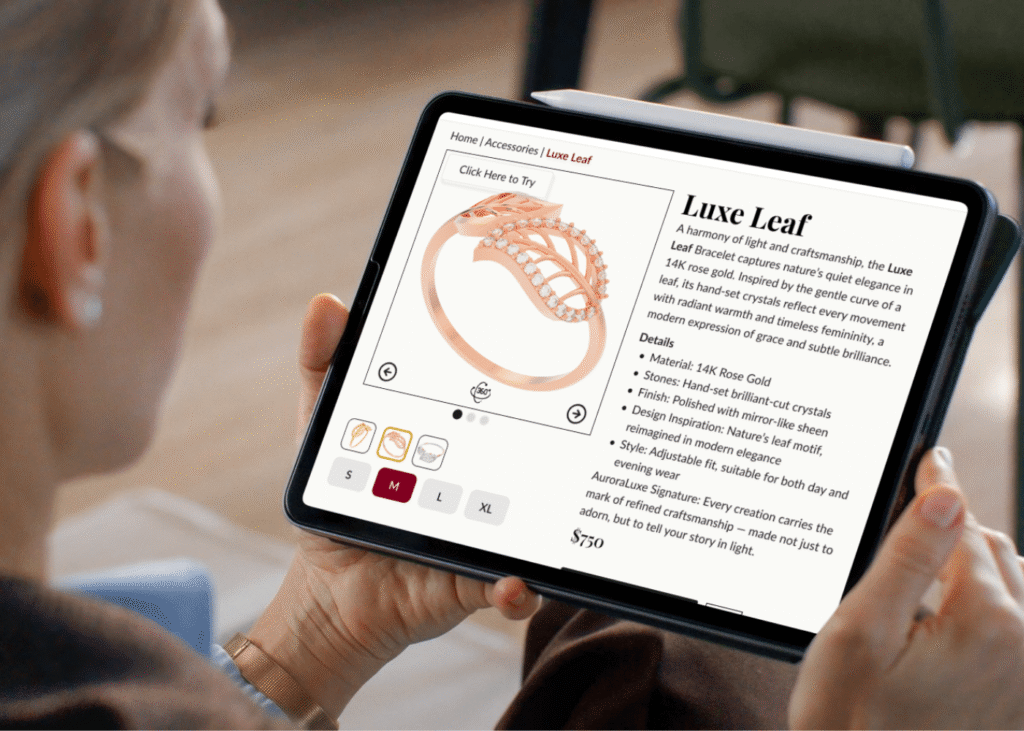
I create the designs for a luxury brand based on the typical situation where users who shop for luxury jewelry often experience:
- Navigation Friction
- Challenging product discovery due to too many categories or an unclear hierarchy.
- Users don’t immediately understand where to find specific collections/items.
- Lack of Emotional Connection
- Many jewelry websites feel transactional, not emotional.
- Storytelling, craftsmanship details, and luxury perception are often missing.
- Gifting Experience Feels Complicated or Generic
- Personalized gifting (engraving, wrapping, message) is often hidden or unclear.
- Users want a smooth way to buy for loved ones without confusion.
- Checkout Feels Long & Fatiguing
- Too many steps, breakdown of total cost unclear, or no preview before payment.
That’s why I decided the goals for this project are:
- Create a luxury-focused digital experience that reflects elegance, exclusivity, and emotional storytelling.
- Design an intuitive product discovery and purchase flow, with minimal friction in browsing, customization, and payment.
- Introduce a personalized gift feature, where customers can purchase their favorite jewelry and gift it with engraving, luxurious packaging, and a meaningful message.
- Ensure responsive design across desktop (primary focus), mobile, and tablet.
Establish a consistent design system inspired by luxury aesthetics (typography, color, spacing, and components).
The Designs of Main Pages for AuroraLuxe
The picture above is some design pages for AuroraLuxe. But how are all the designs created? Well, we can see the process in the following section.
The Design Thinking Process
Empathizing
I began with the empathy phase, where I created a design that was not only responsive, enjoyable, and visually captivating but also required a deep understanding of the industry. Through in-depth and detailed analysis of competitors at the same level, as well as conducting surveys and interviews with several respondents who also had an interest in luxury jewelry, I was able to gain a solid foundation before designing.
However, due to time constraints, I didn’t conduct an interview. Therefore, I utilized an AI service, ChatGPT, to help me plan and prepare interview questions, including synthesizing them.
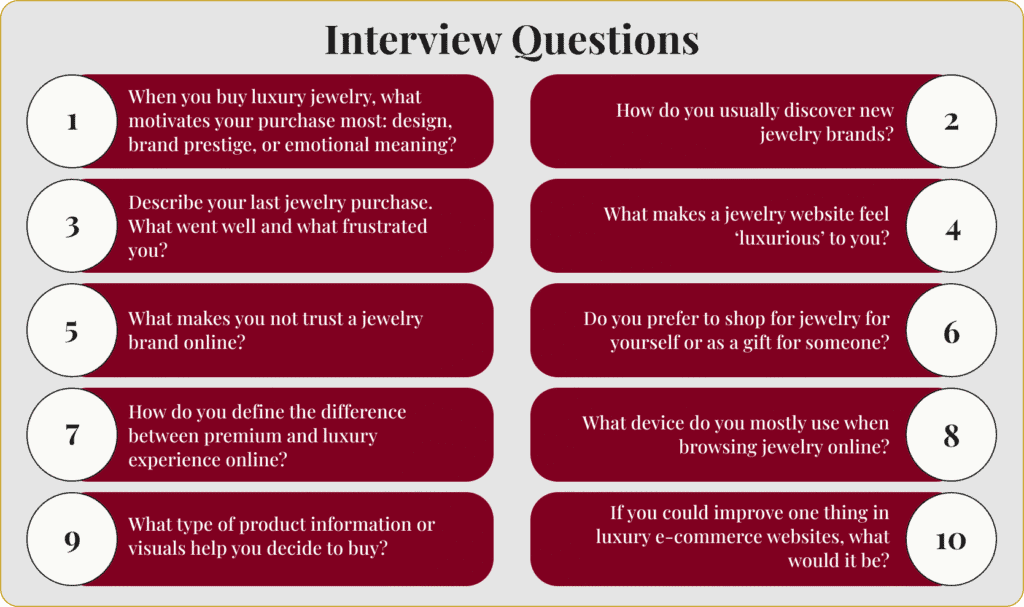
Defining
The empathy phase resulted in the creation of two user personas that are extremely relevant to customers of luxury goods such as Aurora Luxe. The first kind, like Isadora Rose, collects costly jewelry to enhance their appearance and prestige and prestige and as a mark of personal achievement.
The second category is a customer who appreciates presenting high-end gifts to loved ones on important occasions. David Chen epitomizes the second type, while many women appreciate giving high-end gifts to loved ones.

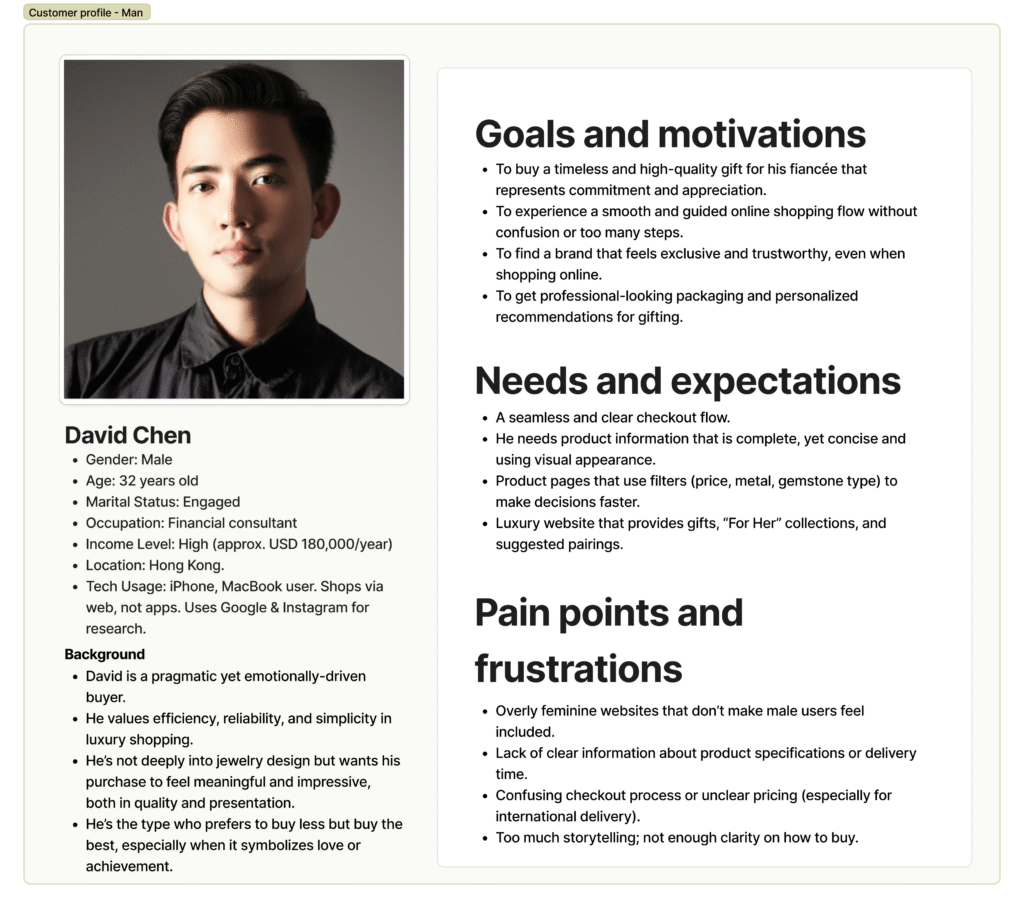
Next, I describe what the two personas experienced in the customer journey map. I showcased what the users want or need and what their problems or pain points are.
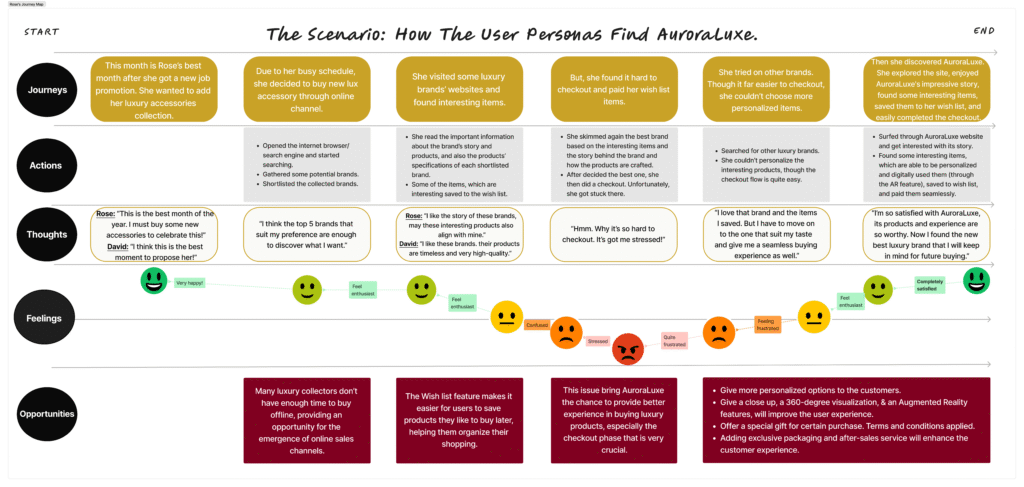
Ideation
Ideation
The pain points depicted in the customer journey map will then serve as the basis for creating a user flow that allows users to enjoy and experience a pleasant experience with various services and ease of shopping on the AuroraLuxe digital store portal due to the clearly designed flow. I created four flows:
1. Search and Purchase Flow
2. Gift Order Flow
3. After-Sales Service Flow
4. Concierge Flow.
However, to save time, I only created designs and prototypes for the product search and purchase flow and gift ordering flow, as these are the two most frequently used by users.
For both flows, I depicted them using low-fidelity and medium-fidelity wireframes.
⇐
The user flows of AuroraLuxe
Wireframes of AuroraLuxe
⇓
Prototyping
This stage involved establishing interface design fundamentals that ensure consistent design details across all device shapes and sizes, including the creation of all components and variants.
I then began applying these standard patterns, starting with a mood board, then mid-fidelity wireframes, and progressing to high-fidelity wireframes across all device types, resulting in several responsive designs.
I then turned these high-fidelity designs into various mockups and interactive designs through prototyping based on the two user flows I had designed.


⇑
Mood Board for AuroraLuxe
⇐
Responsive page designs
Testing
This last phase continues testing high-fidelity designs to examine how excellent the usability level is. I used the two commonly applied usability tests for evaluating design effectiveness:
Interactive prototype testing using Maze to measure interaction flow, task success, and users’ behavior toward the designs.
The User Experience Questionnaire (UEQ) is used to measure emotional response and perceived usability.
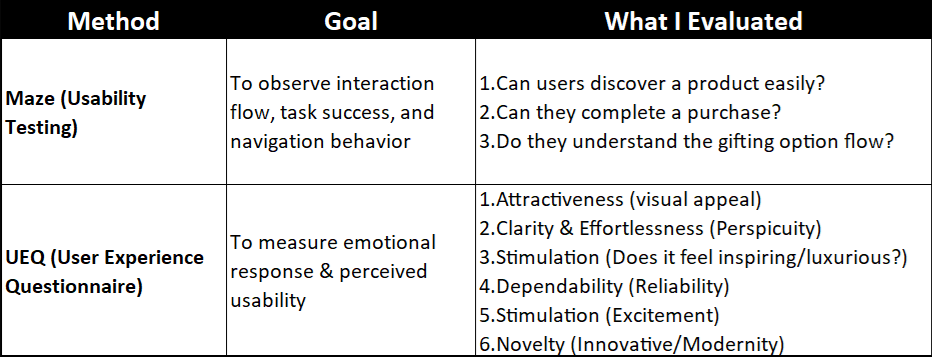
The following images are those included in the interactive prototype testing using Maze:

The general report of the interactive prototype testing using Maze stated that the test had ten respondents who ran the two provided missions.
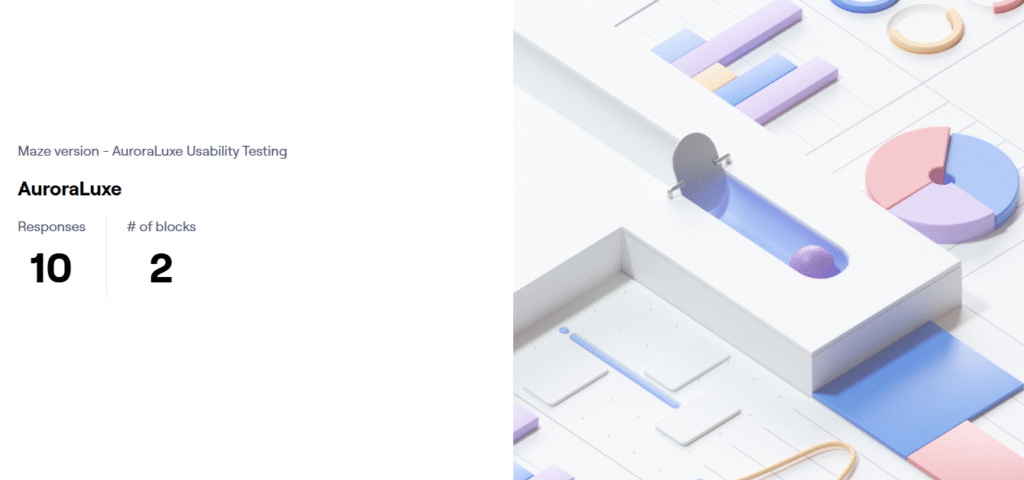
The following table summarizes the results of the interactive prototype testing using Maze:

Meanwhile, some images below are those included in the User Experience Questionnaire (UEQ):
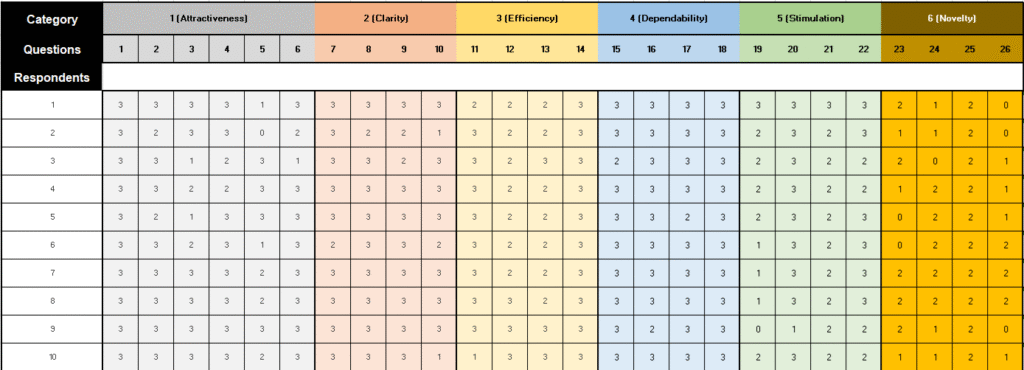
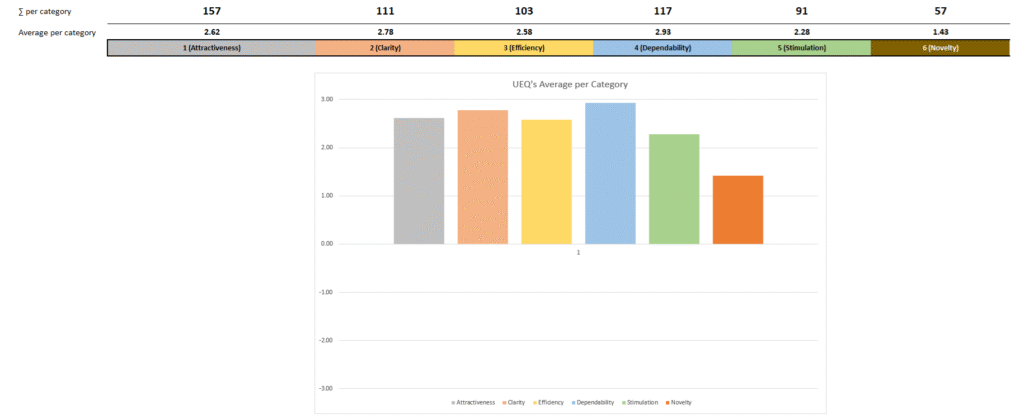
From the two methods of usability testing, here’s the final summary:

For a more detailed case study, you can see a more detailed case study on my Behance here >> https://www.behance.net/gallery/237257933/AuroraLuxe

